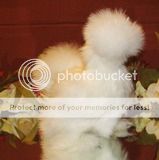Just home from work now.
I hatch roughly 400 silkies per year and at least 600-800 ducks, geese, pheasants, peafowl, turkeys, etc. too. I'm sorry but I don't try and save every mutant that comes out. It also doesn't hurt them to be wet. My hatching room is at least 80 degrees and have heat lamps in the brooder tubs. There are no drafts and they stay plenty warm under the lights. I only open my incubator 2-3 times a day and remove any chicks at those intervals. I'm sorry but I work full time, have to keep up with the farm work, and have family to take care of. I don't have time to sit and babysit the incubator non-stop and wait for every chick to dry fully. In my case I have a huge 400 egg Redwood incubator. If you leave the chicks in there too long they start running around and often times hop out of the racks. When this happens you have to disrupt all the other eggs in there, pull out all the bottom racks, crawl in there and fish out the chicks from the back corners.
I also have a system with my brooder tubs. I have 1 smaller tub for when the chicks first come out. This is their resting area. They are on paper towels and starter is sprinkled down. They get their beaks dipped in water and then I leave them be for at least a day. Once they are up and running around, they get moved to the larger brooder tubs with chicks hatched in the same week span. After that they start getting sorted into bins for keepers or ones to be sold.
I just thought this was a good example of showing exactly the extent those brains are out on the vaulted silkies. Normally this would be the type of situation where I would euthanize it immediately.
I too have used prednisone on my dog in the past. You do have to get it from a vet though. I don't have a decent avian vet in the area and I get the run around from the rest of the vets here when I ask for it for use on birds. Thus I stick to the Vit. E & Selenium here.





